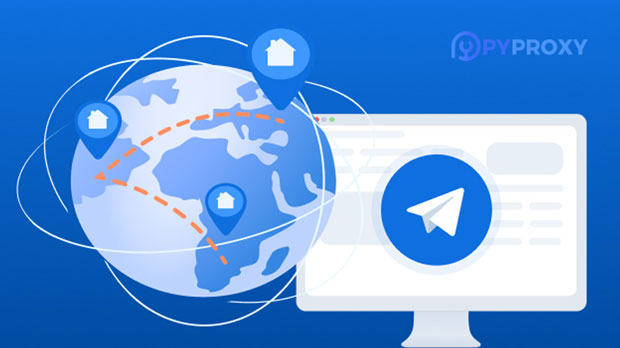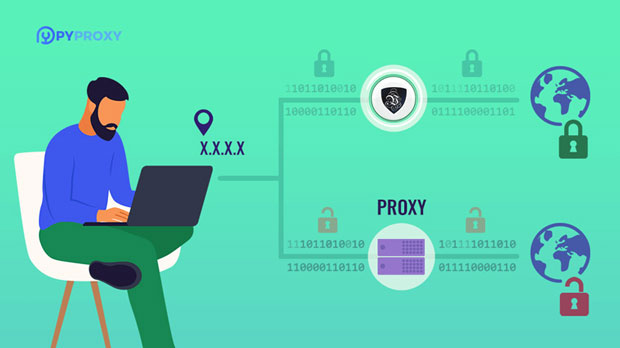What is the reason for still leaking the real IP after using a mobile IP proxy?
Using mobile ip proxies is a popular method to safeguard one's online identity by masking the real IP address. However, despite leveraging mobile IP proxies, some users still experience situations where their real IP address is exposed. This issue can arise due to a variety of reasons that are often overlooked, such as improper configurations, specific technical loopholes, or insufficient understanding of proxy operations. It’s crucial for users to recognize these risks to better understand how they can secure their digital footprint. This article delves deep into the core reasons why real IP addresses may still be leaked even when using mobile IP proxies and offers solutions to avoid such vulnerabilities. Understanding How Mobile IP Proxies WorkBefore diving into the reasons behind the leakage of a real IP address, it's essential to grasp the fundamental mechanism of mobile IP proxies. A mobile ip proxy works by routing your internet traffic through a network of mobile devices, typically connected via cellular data networks. The proxy alters your apparent location and IP address by masking your true identity behind a mobile IP. These proxies provide anonymity by mimicking the usage of mobile data rather than standard broadband or Wi-Fi connections, which can sometimes be more easily traced.However, the effectiveness of mobile IP proxies is not guaranteed, and several factors can still allow the exposure of a real IP. Understanding the following reasons will clarify why this occurs.Improper Proxy ConfigurationOne of the most common reasons for real IP exposure when using mobile IP proxies is improper configuration. For instance, users may not configure their proxy settings correctly, leading to situations where the proxy fails to route traffic effectively. If DNS requests, WebRTC requests, or other traffic are not properly handled through the proxy, your real IP may be visible.Proxy configurations often include settings related to DNS, IP routing, and other network parameters. Incorrect settings may leave gaps where some web traffic bypasses the proxy, routing directly from the user’s device. It is vital to ensure that the proxy is correctly set up to handle all types of traffic that might potentially expose your true IP address.DNS LeaksDNS (Domain Name System) leaks are another significant vulnerability when using mobile IP proxies. Even if your internet traffic is routed through a proxy, your DNS requests may still go through your local internet service provider (ISP), revealing your real IP address. DNS queries are used to translate domain names into IP addresses, and in the absence of proper configurations, these requests may bypass the mobile IP proxy, exposing the real IP address to external entities. Users should ensure they use secure DNS services that prevent DNS leaks or configure their systems to force all traffic, including DNS requests, through the proxy network.WebRTC LeaksWebRTC (Web Real-Time Communication) is a technology used for real-time video, audio, and data communication in web browsers. While WebRTC enables convenient features such as peer-to-peer communication, it can also inadvertently leak your real IP address, even when you are using a mobile IP proxy.WebRTC can be configured to use the user’s local IP address for peer-to-peer connections, bypassing the proxy entirely. This results in an exposure of the real IP address, even if the user believes their traffic is being routed through a mobile IP proxy. Disabling WebRTC in the browser settings or using plugins designed to block WebRTC can help mitigate this issue.Browser and Device VulnerabilitiesThe browser or device you use to connect to the internet may have its own vulnerabilities that expose your real IP address, even when using a mobile IP proxy. Certain web technologies and browser functionalities may inadvertently leak your real IP, making it easier for external websites or entities to track your actual location.For instance, browser fingerprinting technologies can gather detailed information about your device's configuration, software, and even hardware. These details can be used to uniquely identify you, thus undermining the anonymity provided by the proxy. Additionally, some operating systems or applications may not fully support proxying of all traffic, meaning certain applications may still directly use the real IP address.Inconsistent Proxy RotationMobile IP proxies often rely on rotating IP addresses to mask the user’s identity over time. If the proxy service does not rotate IP addresses regularly or properly, there can be instances where the same IP address is used for extended periods, increasing the risk of tracking. Long periods of connection using the same mobile IP could lead to the exposure of the user’s real IP, especially if the proxy provider fails to properly anonymize or rotate IPs.Moreover, inconsistent proxy rotation can also allow malicious actors to correlate patterns of traffic with the same IP address. To ensure anonymity, it is essential that mobile IP proxies provide robust and frequent IP rotation, making it difficult for external parties to link specific activities to a single individual.Device-Specific IssuesCertain mobile devices may also play a role in the exposure of real IP addresses despite the use of a mobile IP proxy. These devices often have unique configurations that can interfere with proxy settings. Mobile operating systems and applications might not always fully support proxy configurations, leading to leaks or unintentional use of the real IP address in certain conditions.For example, if a mobile app or service is not properly configured to use the proxy, it might still make requests directly from the user's mobile network, exposing the true IP. Additionally, certain mobile devices might also struggle with automatic proxy switching, especially if the user switches between mobile networks or Wi-Fi connections.Using Insecure or Unreliable Proxy ProvidersLastly, not all mobile IP proxy providers offer the same level of security and privacy. If you are using a proxy from a provider with poor encryption, inadequate protection mechanisms, or unreliable network routing, your real IP address could easily be exposed. It’s important to understand that some proxies might not offer full support for anonymizing all aspects of your online traffic, leaving gaps where your real IP can leak.For example, proxy providers may use outdated protocols, weak encryption, or insecure methods of routing traffic. In such cases, even if you are using a mobile IP, your real IP address can still be uncovered by sophisticated trackers or data miners.ConclusionWhile mobile IP proxies can offer a significant level of anonymity and security, it’s important to recognize that they are not foolproof. The exposure of a real IP address after using a mobile IP proxy can happen for a variety of reasons, including improper configuration, DNS leaks, WebRTC vulnerabilities, browser issues, inconsistent proxy rotation, device-specific problems, and unreliable proxy providers. To mitigate these risks, it’s essential to follow best practices such as properly configuring your proxy, using secure DNS settings, disabling WebRTC, and ensuring that both your device and proxy provider offer reliable and consistent service. By understanding these potential pitfalls and taking the necessary precautions, you can significantly reduce the likelihood of your real IP address being exposed while using a mobile IP proxy.
2025-02-17






















































